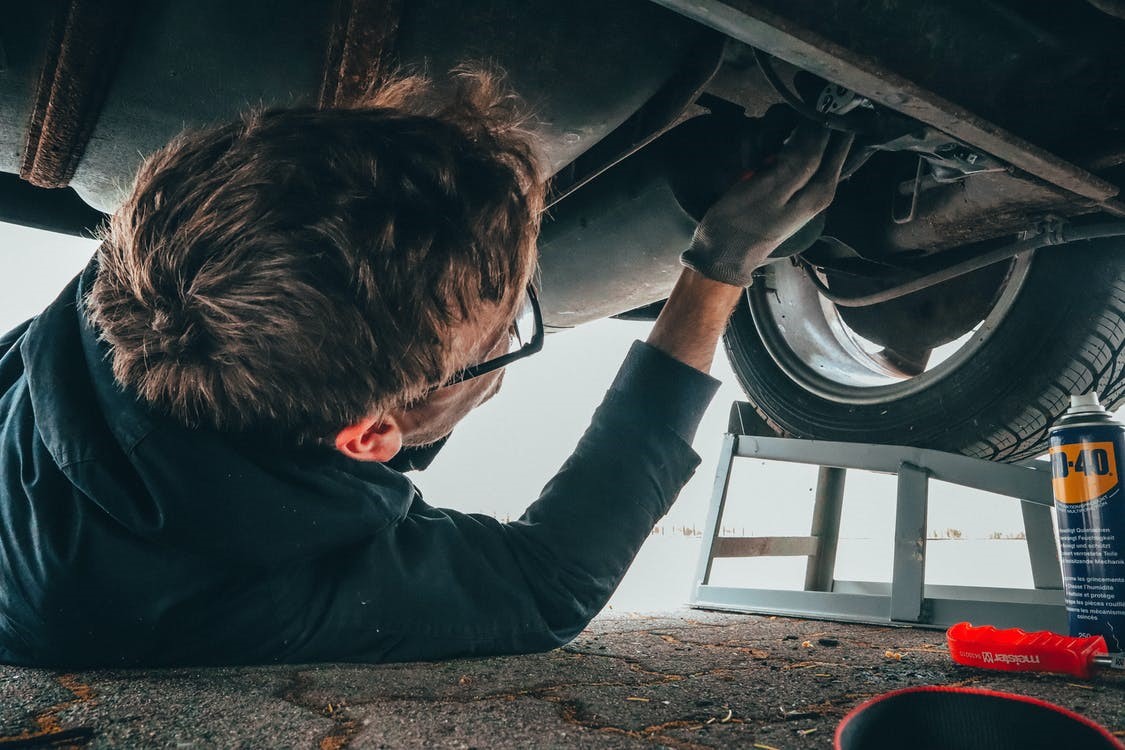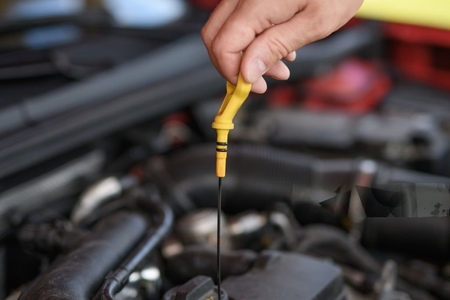Why is the Engine Light on after an Oil Change? Unraveling the Mystery
Seeing the check engine light appear on your dashboard after you have changed the oil in your car might be unsettling. While an oil change is a routine maintenance task crucial for your engine’s well-being, it might leave you puzzled when the warning light persists. In this guide, we’ll shed light on the potential reasons behind the check engine light after an oil change and address a common question: can low oil cause the check engine light to come on?
Understanding the Check Engine Light: A Vital Indicator
Your car’s communication system warns you of any problems with the engine or any related systems by flashing the check engine light. While it doesn’t pinpoint the exact problem, it serves as an early warning system, urging you to investigate further. Ignoring this signal could lead to more severe damage and costly repairs down the road.
The Role of Oil in Engine Health
Before delving into the post-oil change scenarios, let’s emphasize the critical role oil plays in your engine’s overall health. By acting as a lubricant, engine oil reduces wear and friction between moving parts. It also aids in maintaining the cleanliness of internal parts and dissipates heat to help cool the engine.
Can Low Oil Cause the Check Engine Light to Come On?
True enough, a bright check engine light is frequently caused by low oil levels. There is more friction and heat produced when your engine is operating with inadequate oil. When oil levels fall below a safe threshold, check engine lights illuminate on modern cars thanks to sensors that monitor oil levels.
Post-Oil Change Scenarios: Why is the Check Engine Light On?
Oil Leak:
Check for oil leaks in your car if the check engine light appears after an oil change. Oil seepage may result from a drain plug or oil filter that is loose or fitted incorrectly. Over time, even a tiny leak might result in a considerable reduction in oil levels and set off the warning light.
Faulty Oil Pressure Sensor:
Another possibility is a malfunctioning oil pressure sensor. This sensor monitors the pressure of the oil circulating in the engine. It may flash the check engine light if it malfunctions or gives false readings. While unrelated to the oil change, this problem may arise at the same time as it does.
Incomplete Oil Change:
Sometimes, a seemingly routine oil change may not be as thorough as necessary. Residual old oil or contaminants left behind during the process can impact the performance of the fresh oil. The check engine light may appear as a result of problems, including decreased lubrication efficiency.
Oil Filter Issues:
The oil filter is a crucial component in the oil circulation system. If the filter is clogged or improperly installed during the oil change, it can restrict oil flow, resulting in decreased oil pressure and potential engine problems that trigger the check engine light.
Incorrect Oil Type or Amount:
Using the wrong type of oil or not putting it in the right quantity can have adverse effects on engine performance. Always adhere to the manufacturer’s recommendations for oil specifications and fill capacity to avoid complications that may lead to the check engine light coming on.
Addressing the Issue: Steps to Take
Check Oil Levels:
Start by checking your oil levels. Use the dipstick to ensure the oil is at the recommended level. Add the recommended amount of oil for your car if its level is low.
Inspect for Leaks:
Check the area where you park your vehicle for evidence of an oil leak. Determine the leak’s origin if you locate one. It could be a loose drain plug, a faulty oil filter seal, or other issues requiring attention.
Verify the Oil Pressure Sensor:
To find the oil pressure sensor on your car, go to the owner’s handbook. Look for any obvious damage or disconnected wires. Replace the sensor if necessary, or get help from an expert.
Review the Oil Change Process:
Reflect on the recent oil change. Make sure that the mechanic or you performed the necessary steps, such as tightening the oil filter and drain plug in accordance with the manufacturer’s instructions.
Consult a Professional:
It is essential to get advice from a qualified technician if you are unable to diagnose or fix the problem on your own. They are able to carry out a comprehensive examination, provide an accurate diagnosis, and suggest any required repairs.
Taking Preventive Measures: Maintaining a Healthy Engine
Beyond addressing the immediate issue, adopting preventive measures is crucial for maintaining a healthy engine and preventing future occurrences of the check engine light after an oil change.
Regular Oil Checks:
Establish the routine of routinely checking your oil levels, particularly following an oil change. This simple task can help you catch potential issues early on, preventing the check engine light from becoming a persistent concern.
Choose Quality Oil and Filters:
Use high-quality oils and filters that either match or surpass the recommendations made by the manufacturer of your car. Using inferior items might impede engine performance and exacerbate problems that cause the check engine light to illuminate.
Follow Maintenance Schedules:
Adhere to your vehicle’s recommended maintenance schedule. Regularly changing the oil, filters, and other essential components ensures that your engine operates at its best, reducing the likelihood of triggering warning signals.
Professional Oil Changes:
While DIY oil changes are common, consider having your oil changed by a professional mechanic. Their expertise ensures that the process is thorough, reducing the risk of issues like incomplete oil changes or improper installation of components.
Addressing Check Engine Light Promptly:
If the check engine light does come on, address it promptly. Ignoring the warning can result in more serious issues. Bring your car to an expert mechanic so they can do a diagnostic and find the source of the problem.
Common Misconceptions about the Check Engine Light
It’s Only About the Engine:
The check engine light isn’t just focused on the engine, despite its name. It monitors various systems, including the transmission, exhaust, and emissions. So, while the issue might not be directly related to the engine, it still requires attention.
I Can Ignore It if My Car Seems Fine:
Some drivers believe that if their car seems to be running smoothly despite the check engine light, there’s no cause for concern. However, the light can indicate potential problems that may not manifest immediately but could lead to significant issues over time.
I Can Reset the Light and Forget About It:
If the underlying problem is not addressed, simply resetting the check engine light will not solve it. The problem that still has to be fixed can get worse, and the light might emerge again. Figuring out the problem and taking the necessary steps are crucial.
It’s Too Costly to Address Immediately:
Delaying the resolution of check engine light issues due to concerns about repair costs can be counterproductive. Neglecting issues might cause them to worsen and require more costly and time-consuming fixes later on.
Staying Proactive: The Key to a Trouble-Free Drive
Maintaining a reliable and efficient vehicle involves more than just reacting to warning signals. By taking a proactive approach to automobile maintenance, you may greatly lower the chance of running into problems and guarantee a trouble-free trip. Here are additional tips to keep your vehicle in top condition:
Monitor Fluid Levels:
Check other vital fluids, including coolant, brake fluid, and transmission fluid, on a regular basis in addition to oil. Sustaining appropriate fluid levels is essential for the lifetime and general functionality of your car.
Attend to Warning Lights Promptly:
The check engine light is not the only warning signal your vehicle provides. Pay close attention to any warning lights and read your car’s handbook to find out what they indicate. More serious complications can be avoided by taking early action.
Keep Your Engine Cool:
Serious engine damage might result from overheating. Make sure the coolant level is correct, and your radiator is in excellent working order. If your vehicle shows signs of overheating, address the issue immediately.
Mind Your Driving Habits:
Your driving habits play a significant role in your vehicle’s health. Avoid aggressive driving, excessive speeding, and abrupt stops, as these behaviors can put undue stress on your engine and other critical components.
Invest in Regular Inspections:
Make an appointment for routine inspections with a licensed technician. They can see possible problems before they become serious, giving you peace of mind and maybe sparing you from having to pay for pricey repairs.
also read: common problems after engine replacement
Final Thoughts: A Well-Maintained Engine, A Smooth Ride
In the world of automotive care, prevention is undeniably better than cure. By understanding the factors that can trigger the check engine light after an oil change and taking proactive measures to maintain your vehicle, you contribute to a trouble-free driving experience.
Regular maintenance, timely intervention, and a keen awareness of your vehicle’s signals are the keys to a well-maintained engine. Remember, a check engine light is not a cause for panic but a call to action. Addressing it promptly ensures that your car continues to serve you reliably, mile after mile.




